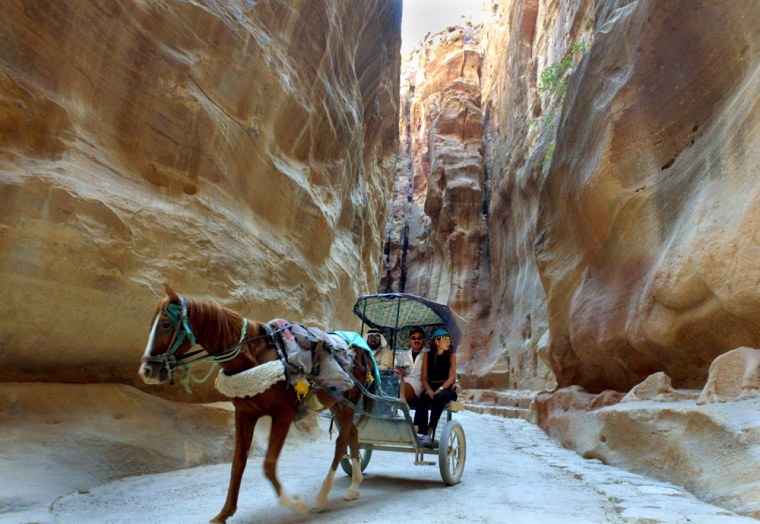Archaeologists called Tuesday for urgent steps to safeguard Petra, the ancient rose-red rock city recently picked as one of the new seven wonders of the world, saying an increase in visitors could damage it unless protective measures were taken.
"Choosing Petra as a world wonder has made the public even more aware of the need to conserve this unique heritage that we have," said Khairieh Amr, a senior archaeologist with Jordan's Ministry of Tourism and Antiquities.
But Amr warned that Petra and other archaeological sites in the region could suffer because of a "building boom that is taking place" to expand tourist facilities.
Fawwaz Khreisheh, head of the Department of Antiquities, which oversees and maintains the country's archaeological sites, said he was "very optimistic" the Cabinet would soon "give the green light" for a bylaw mandating a strategy to safeguard Petra.
"We are hoping within this month or by August, the bylaw will be approved and we'll proceed with Petra Action Plan," Khreisheh told The Associated Press.
Petra, whose popularity soared after the movie "Indiana Jones and the Last Crusade," is known for its dramatic tombs and temple facades carved by Nabataean Arab nomads into the soft sandstone some 2,000 years ago.
Hidden behind an almost impenetrable barrier of rugged mountains for centuries, Petra was rediscovered by Swiss explorer Johann Ludwig Burchhardt in 1812 and was officially listed as a UNESCO World Heritage Site in 1985.
Earlier this month, it was chosen by more than 100 million people in a global online poll and phone campaign as one of the world's top architectural marvels. Other winners included the Great Wall of China, Brazil's Statue of Christ the Redeemer, Peru's Machu Picchu, the Chichen Itza Pyramid in Mexico, Rome's Colosseum and Taj Mahal in India.
Along with the construction boom, Petra's listing in the poll is expected to draw even more tourists.
Khreisheh said the strategy — based on studies conducted during the late 1990s with Jordanian officials, the U.S. Parks Service and UNESCO — outlines ways to preserve Petra while further opening it to visitors. It also deals with excavation and restoration work.
Zeyad al-Salameen, assistant professor of Nabatean archaeology at Al Hussein Bin Talal University in nearby Wadi Musa, said a surge in tourists and construction were not the only dangers to the site. Along with better signposts, tour guides and clearly defined tourist paths, "increased site protection against artifact theft" is also needed, al-Salameen said.
Khreisheh couldn't provide a firm budget figure for the action plan but said Petra needs about 1 million Jordanian dinars ($1,411,369, or 1,024,238 euros) a year to run properly. It's currently operating on one-fifth of that.
